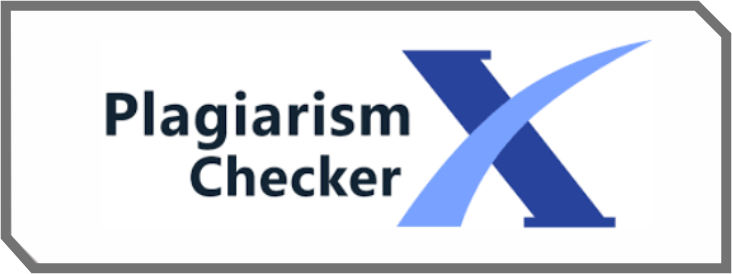Uji Kadar Gula pada Susu Meal Replacement di Kota Medan dengan Spektofotometri UV-Vis
DOI:
https://doi.org/10.59841/an-najat.v3i2.2545Keywords:
Diabetes, Meal replacement, Obesity, Sugar levels, Uv-Vis SpectrophotometryAbstract
Diabetes and obesity are closely related, with obesity as a nutritional problem that continues to increase. Obesity occurs due to an imbalance in energy intake and expenditure, while diabetes is often not realized until serious complications appear. A diet high in fiber and low in sugar can reduce the risk of diabetes. Meal replacements such as powdered milk and snack bars can be used, but consumption needs to be limited because their nutritional content is less than ideal and has the potential to cause health problems if consumed excessively. The research was carried out using quantitative and qualitative methods on 3 types of meal replacement milk powder drinks, namely brand A, brand B and brand C. This was done by collecting samples deliberately according to the inclusion and exclusion criteria, which is the sampling strategy used in this research. then research evaluation carried out 3 types of tests; Molisch's test, Benedict's test and Fehling's test. The results of the research show that the three samples of meal replacement milk circulating in the city of Medan contain sugar, but are quite safe for consumption in general and the sugar content in meal replacement milk does not exceed the daily sugar level.
References
Aiman Saleh, A. M., & Mohammed, M. N. (2021). Polysaccharides; classification, chemical properties, and future perspective applications in fields of pharmacology and biological medicine (a review of current applications and upcoming potentialities). Journal of Polymers and the Environment, 29, 2359–2371.
Badan Kebijakan Pembangunan Kesehatan (BKPK). (2023). BKPK Kementerian Kesehatan Republik Indonesia. https://www.badankebijakan.kemkes.go.id/hasil-ski-2023/
Banjarnahor, R. O., & Fitria, F. (2022). Faktor-faktor risiko penyebab kelebihan berat badan dan obesitas. TROPHICO: Tropical Public Health Journal.
Carla, A. E. (2021). Systematic review tentang pengaruh obesitas terhadap kejadian komplikasi diabetes melitus tipe dua. Verdure Health Science Journal, 3(1).
Febbraio, M. A., & Karin, M. (2021). “Sweet death”: Fructose as a metabolic toxin that targets the gut-liver axis. Cell Metabolism, 33(12).
Fitri, A. S., & Aini, Y. (2020). Analisis senyawa kimia pada karbohidrat. Sainteks, 17(1).
Gandjar, I. G., & Rahayu, A. (2018). Spektroskopi molekuler untuk analisis farmasi. UGM Press.
Goguen, J., & Farid, M. (2018). Hyperglycemic emergencies in adults. Canadian Journal of Diabetes, 42.
Hardianto, D. (2020). Telaah komprehensif diabetes melitus: Klasifikasi, gejala, diagnosis, pencegahan, dan pengobatan. Jurnal Bioteknologi & Biosains Indonesia, 7(2).
Imelda, S. (2019). Faktor-faktor yang mempengaruhi terjadinya diabetes melitus di Puskesmas Harapan Raya tahun 2018. Scientia Journal.
Kurzyna-Szklarek, M., & Cichoń, J. (2022). Analysis of the chemical composition of natural carbohydrates. Food Chemistry.
Le Parc, A., & Helbert, H. (2014). Rapid quantification of functional carbohydrates in food products. Food and Nutrition Sciences, 5(1).
Lestari, Z. S. (2021). Diabetes melitus: Review etiologi, patofisiologi, gejala, penyebab, cara pemeriksaan, cara pengobatan dan cara pencegahan. Universitas Islam Negeri Alauddin Makassar.
Nasution, F., & Anhar, A. (2021). Faktor risiko kejadian diabetes mellitus. Jurnal Ilmu Kesehatan, 9(2).
Novitasari, M., & Rachmawati, N. (2019). Penetapan kadar pemanis buatan (Na-siklamat) pada beberapa minuman serbuk instan di Kota Surakarta. Journal of Health Research, 2(2).
Nurjannah, L., & Suryani, S. (2017). Produksi asam laktat oleh Lactobacillus delbrueckii subsp. bulgaricus dengan sumber karbon tetes tebu. JTIP: Jurnal Teknologi dan Industri Pertanian Indonesia, 9(1).
Panjaitan, R. S., & Dewi, V. (2023). Qualitative and quantitative identification of carbohydrate and protein content in packaged chocolate beverages. Indonesian Journal of Pharmaceutical Research, 3(1).
Pohan, R. F. (2021). Analisis kandungan kalsium dan fosfor dalam susu formula bayi dengan metode destruksi kering dan basah menggunakan spektroskopi serapan atom. Jurnal LPPM UGN, 11(4).
Punthakee, Z., & Maguire, M. (2018). Definition, classification and diagnosis of diabetes, prediabetes and metabolic syndrome. Canadian Journal of Diabetes, 42.
Riskianti, K., & Suryani, S. (2019). Konsumsi meal replacement dan kadar glukosa darah pasien DM tipe II. Jurnal Gizi Prima (Prime Nutrition Journal), 4(1).
Saraswati, S. K., & Dewi, F. (2021). Literature review: Faktor risiko penyebab obesitas. MKMI: Media Kesehatan Masyarakat Indonesia, 20(1).
Sasongko, A., & Fitriani, D. (2019). Pemanfaatan limbah kulit singkong untuk produksi oligosakarida melalui hidrolisis kimiawi. JST: Jurnal Sains Terapan, 5(1).
Selvaraj, C., & Chandra, D. (2023). Macromolecular chemistry: An introduction. In In silico approaches to macromolecular chemistry (pp. 71–128).
Yue, F., & Zhang, J. (2022). Effects of monosaccharide composition on quantitative analysis of total sugar content by phenol-sulfuric acid method. Frontiers in Nutrition.
Yuli, A., & Rahayu, S. (2023). Literature review: Faktor yang mempengaruhi diabetes mellitus gestasional. Jurnal Ilmiah Mahasiswa & Penelitian Keperawatan (JIMPK), 3(4).
Downloads
Published
How to Cite
Issue
Section
License
Copyright (c) 2025 An-Najat

This work is licensed under a Creative Commons Attribution-ShareAlike 4.0 International License.









